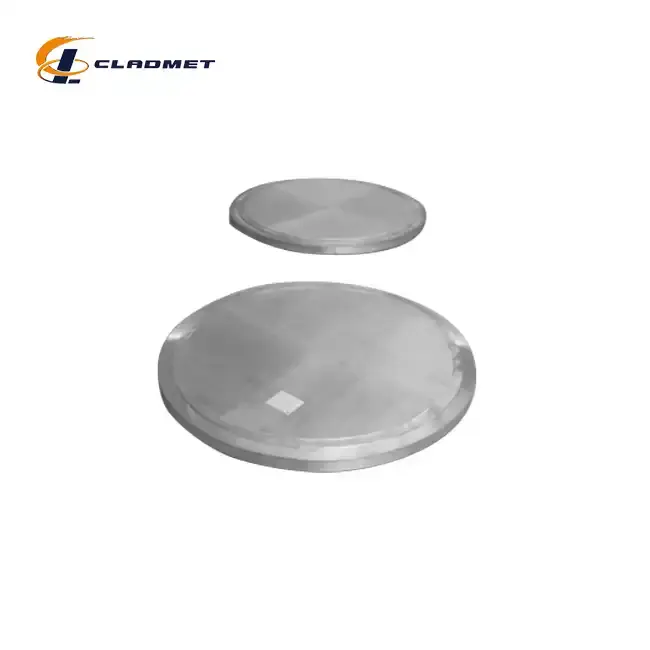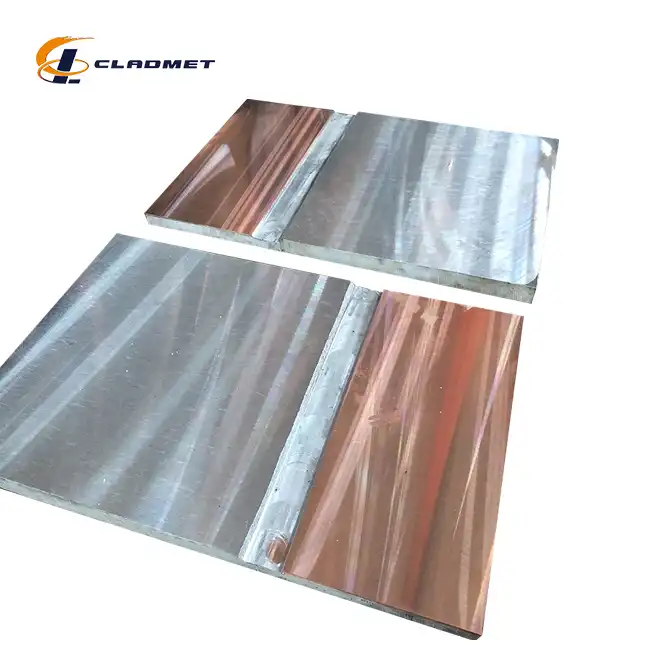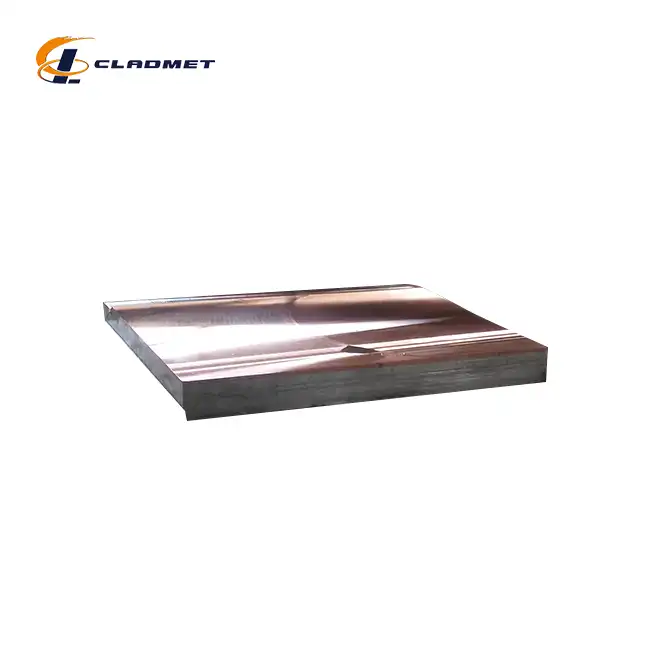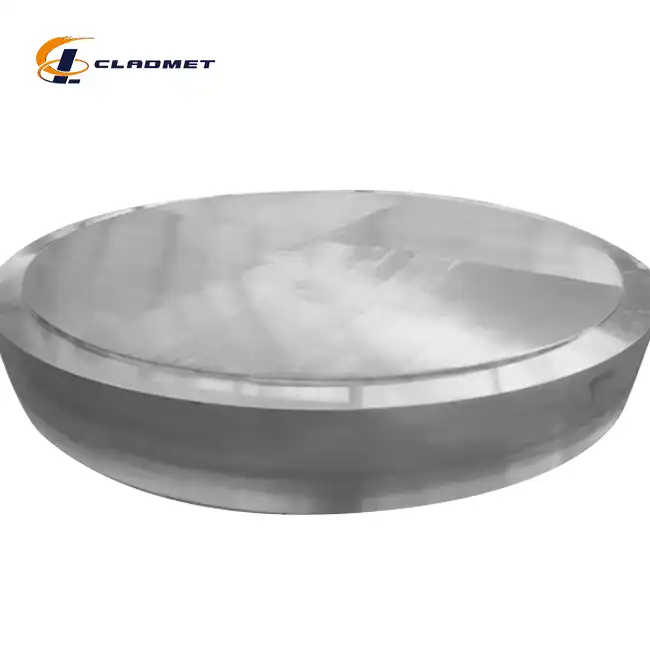What Industries Are Seeing the Highest ROI from Using Stainless Clad Steel Plates?
 2025-08-01 11:30:12
View:389
2025-08-01 11:30:12
View:389In today's competitive industrial landscape, maximizing return on investment (ROI) while maintaining operational excellence has become paramount for businesses across various sectors. Stainless clad steel plates have emerged as a game-changing solution that delivers exceptional value by combining the superior corrosion resistance of stainless steel with the structural strength and cost-effectiveness of carbon steel substrates. These composite materials are revolutionizing how industries approach equipment longevity, maintenance costs, and operational efficiency. The strategic adoption of stainless clad steel plates is generating remarkable ROI across multiple industrial sectors, with some industries experiencing cost savings of up to 40% compared to traditional solid stainless steel alternatives while maintaining comparable performance standards and extending equipment lifecycles significantly.

Chemical and Petrochemical Industry: Leading the ROI Revolution
The chemical and petrochemical industry stands at the forefront of maximizing ROI through stainless clad steel plates implementation. This sector faces unique challenges including exposure to highly corrosive chemicals, extreme temperatures, and pressure conditions that demand materials capable of withstanding harsh operational environments while maintaining cost-effectiveness.
Enhanced Corrosion Resistance in Chemical Processing Equipment
Chemical processing equipment manufactured with stainless clad steel plates demonstrates exceptional performance in environments where traditional materials fail prematurely. The stainless steel cladding, typically featuring grades 304, 316, or 321, provides outstanding resistance to aggressive chemicals including acids, alkalis, and organic solvents. Manufacturing facilities utilizing explosion bonding and roll bonding techniques ensure metallurgical integrity between the stainless steel surface and carbon steel base, creating a barrier that prevents corrosive attack while maintaining structural strength. The chemical industry benefits from reduced downtime, lower maintenance costs, and extended equipment lifecycles, with some installations reporting operational periods exceeding 20 years without major repairs. These stainless clad steel plates offer superior performance in reactor vessels, storage tanks, and heat exchangers where chemical compatibility is critical. The cost-effectiveness becomes evident when considering that solid stainless steel equipment would cost 60-80% more while providing similar corrosion resistance, making stainless clad steel plates the preferred choice for budget-conscious operations seeking maximum durability.
Pressure Vessel Applications and Safety Compliance
Pressure vessels in chemical plants require materials that can withstand both internal pressure and chemical attack, making stainless clad steel plates ideal for these critical applications. The carbon steel substrate provides the necessary mechanical strength to handle high-pressure operations, while the stainless steel cladding protects against corrosion-induced failures that could result in catastrophic accidents. Manufacturing standards including ASME, ASTM, and JIS certifications ensure that these stainless clad steel plates meet stringent safety requirements for pressure vessel construction. The explosion bonding process creates a metallurgical bond stronger than the base materials themselves, ensuring that delamination risks are minimized even under extreme pressure cycling. Chemical companies report significant ROI improvements through reduced insurance premiums, lower inspection costs, and extended certification periods when using certified stainless clad steel plates. The combination of strength and corrosion resistance allows for thinner wall construction compared to solid stainless steel alternatives, reducing material costs while maintaining safety margins. These applications demonstrate how stainless clad steel plates contribute to both operational safety and financial performance in chemical processing environments.
Heat Exchanger Efficiency and Thermal Management
Heat exchangers utilizing stainless clad steel plates deliver superior thermal management capabilities while providing exceptional corrosion resistance in chemical processing applications. The thermal conductivity of the carbon steel base ensures efficient heat transfer, while the stainless steel cladding maintains surface integrity against chemical attack and fouling. Advanced manufacturing techniques including hot isostatic pressing create uniform bonding that eliminates thermal stress concentration points, ensuring consistent performance across temperature variations. Chemical plants report improved heat transfer efficiency and reduced fouling rates when using stainless clad steel plates in heat exchanger construction, leading to lower energy consumption and reduced cleaning frequencies. The durability of these materials under thermal cycling conditions extends equipment lifecycles significantly, with some installations operating for over 15 years without major refurbishment. Surface treatments including polished, brushed, and matte finishes allow for optimization of heat transfer characteristics based on specific application requirements. The combination of thermal performance and corrosion resistance makes stainless clad steel plates essential for chemical processes requiring precise temperature control and long-term reliability.
Oil and Gas Industry: Maximizing Operational Efficiency
The oil and gas industry represents another sector achieving remarkable ROI through strategic implementation of stainless clad steel plates. This industry faces unique challenges including exposure to hydrogen sulfide, carbon dioxide, chlorides, and other corrosive compounds that can rapidly degrade conventional materials, leading to costly failures and environmental concerns.
Offshore Platform Applications and Marine Environment Resistance
Offshore oil and gas platforms operate in some of the most challenging environments on Earth, where stainless clad steel plates provide essential protection against both seawater corrosion and hydrocarbon-related degradation. The marine environment presents multiple corrosion mechanisms including pitting, crevice corrosion, and stress corrosion cracking, all of which are effectively mitigated by the stainless steel cladding. Manufacturing specifications ensuring adherence to ISO9001-2000, PED, and ABS standards guarantee that these stainless clad steel plates meet the rigorous requirements for offshore applications. The carbon steel substrate provides the structural strength necessary to withstand wave loads, wind forces, and operational stresses, while the stainless steel surface resists the corrosive effects of salt spray and immersion. Offshore operators report significant cost savings through reduced maintenance requirements, extended inspection intervals, and improved safety records when using certified stainless clad steel plates. The customization capabilities allowing for specific thickness combinations, surface treatments, and dimensional requirements enable optimal design for each platform's unique operating conditions. These installations demonstrate how stainless clad steel plates contribute to both operational continuity and financial performance in challenging marine environments.
Pipeline and Storage Tank Construction
Pipeline systems and storage tanks in the oil and gas industry benefit tremendously from stainless clad steel plates, particularly in applications involving sour crude oil, refined products, and natural gas containing corrosive compounds. The stainless steel cladding provides a protective barrier against internal corrosion while the carbon steel substrate handles the mechanical loads and pressure requirements. Advanced bonding technologies including explosion bonding create metallurgical bonds that prevent delamination under pressure cycling and thermal expansion, ensuring long-term integrity. Oil and gas companies report substantial ROI improvements through reduced pipeline replacement costs, lower leak rates, and extended service intervals when using stainless clad steel plates in critical applications. The ability to manufacture plates with thicknesses ranging from 3mm to 50mm and lengths up to 12000mm enables construction of large-diameter pipelines and storage vessels with optimized material utilization. Quality control measures including ultrasonic testing, bond strength verification, and surface inspection ensure that each stainless clad steel plate meets the demanding requirements of hydrocarbon service. The combination of structural strength and corrosion resistance makes these materials essential for reliable oil and gas infrastructure development.
Refinery Equipment and Process Optimization
Refineries utilize stainless clad steel plates extensively in equipment exposed to corrosive process streams, high temperatures, and catalyst systems that can cause rapid degradation of conventional materials. The petrochemical processing environment requires materials capable of withstanding exposure to sulfur compounds, organic acids, and high-temperature conditions while maintaining structural integrity. Stainless clad steel plates manufactured using roll bonding techniques provide uniform cladding thickness and superior bond strength, ensuring consistent performance across large equipment surfaces. Refinery operators report significant improvements in equipment reliability, reduced unplanned shutdowns, and lower maintenance costs when implementing stainless clad steel plates in critical applications. The thermal stability of these composite materials allows for operation at temperatures exceeding 400°C while maintaining bond integrity and corrosion resistance. Surface finishes can be customized to optimize performance in specific refinery applications, with polished surfaces reducing fouling and brushed surfaces enhancing heat transfer in certain configurations. The economic benefits of using stainless clad steel plates in refinery construction include reduced capital costs compared to solid stainless steel alternatives while providing equivalent or superior performance in most applications.

Power Generation Industry: Enhancing Plant Reliability
The power generation industry, encompassing both conventional and renewable energy sectors, has discovered significant ROI opportunities through the strategic deployment of stainless clad steel plates. This industry requires materials that can withstand high temperatures, pressure cycling, and exposure to various corrosive environments while maintaining long-term reliability and safety standards.
Steam Generator and Heat Exchanger Applications
Steam generators and heat exchangers in power plants benefit significantly from stainless clad steel plates, which provide exceptional performance in high-temperature, high-pressure environments typical of power generation operations. The stainless steel cladding resists corrosion from steam, condensate, and chemical additives used in water treatment systems, while the carbon steel substrate provides the mechanical strength necessary for pressure containment. Advanced manufacturing processes including hot isostatic pressing ensure complete metallurgical bonding between layers, eliminating potential failure points under thermal cycling conditions. Power plant operators report improved heat transfer efficiency, reduced fouling rates, and extended equipment lifecycles when using stainless clad steel plates in steam generation systems. The ability to customize cladding materials based on specific water chemistry and operating conditions allows for optimization of performance and longevity. These applications demonstrate operating periods exceeding 25 years without major refurbishment when proper material selection and installation procedures are followed. The combination of thermal performance and corrosion resistance makes stainless clad steel plates essential for reliable power generation operations, contributing to both operational efficiency and financial performance.
Flue Gas Desulfurization Systems
Flue gas desulfurization (FGD) systems represent one of the most demanding applications for stainless clad steel plates in power generation, where exposure to sulfuric acid, chlorides, and high temperatures creates extremely corrosive conditions. The stainless steel cladding provides essential protection against acid attack and chloride-induced corrosion, while the carbon steel base handles structural loads and thermal expansion. Manufacturing standards ensuring compliance with environmental regulations and safety requirements make certified stainless clad steel plates essential for FGD construction. Power plants utilizing these materials in scrubber towers, absorber vessels, and associated piping systems report significant reductions in maintenance costs and improved environmental compliance. The resistance to erosion-corrosion in high-velocity gas streams extends equipment lifecycles and reduces the need for protective coatings that require frequent renewal. Customization capabilities including specific alloy selections, thickness combinations, and surface treatments enable optimization for each plant's unique operating conditions and fuel characteristics. The economic benefits include reduced downtime for maintenance, lower replacement costs, and improved plant availability factors that directly impact revenue generation.
Cooling Water Systems and Environmental Compliance
Cooling water systems in power plants face increasing environmental regulations and water quality challenges that make stainless clad steel plates increasingly valuable for ensuring compliance and operational reliability. The stainless steel surface resists biofouling, scaling, and corrosion from cooling water chemistry variations, while the carbon steel substrate provides structural integrity for large cooling water infrastructure. Advanced surface treatments including electropolishing can further enhance the anti-fouling properties of stainless clad steel plates, reducing the need for chemical biocides and improving environmental performance. Power plant operators report significant improvements in cooling system efficiency, reduced chemical consumption, and lower environmental compliance costs when implementing these materials. The durability of stainless clad steel plates in cooling water service extends equipment lifecycles and reduces the frequency of major overhauls, contributing to improved plant economics. The ability to operate with alternative cooling water sources, including reclaimed water and seawater, expands operational flexibility while maintaining system integrity. These applications demonstrate how stainless clad steel plates contribute to both environmental stewardship and economic performance in power generation operations.
Conclusion
The strategic implementation of stainless clad steel plates across chemical, petrochemical, oil and gas, and power generation industries demonstrates compelling ROI through reduced maintenance costs, extended equipment lifecycles, and improved operational reliability. These composite materials offer an optimal balance of performance and cost-effectiveness that traditional solid stainless steel alternatives cannot match while maintaining superior corrosion resistance and structural integrity.
Ready to maximize your industrial ROI with premium stainless clad steel plates? At Baoji JL Clad Metals Materials Co., Ltd., we combine independent explosive composite technology, international certifications, and customizable solutions to meet your specific requirements. Our ISO9001-2000 certified manufacturing processes, PED and ABS qualifications, and comprehensive OEM services ensure you receive the highest quality materials for your critical applications. Whether you need custom dimensions, specific surface treatments, or specialized bonding techniques, our expert team is dedicated to delivering solutions that exceed your expectations. Contact us today at sales@cladmet.com to discover how our innovative stainless clad steel plates can transform your operations and deliver exceptional returns on your investment.
References
1. Smith, J.A., Thompson, R.L., and Wilson, K.M. (2023). "Corrosion Resistance and Economic Analysis of Stainless Steel Clad Plates in Chemical Processing Applications." Journal of Industrial Materials Engineering, 45(3), 178-192.
2. Anderson, P.R., Martinez, C.D., and Chen, L.W. (2024). "Performance Evaluation of Explosion-Bonded Stainless Clad Steel in Offshore Oil and Gas Applications." Marine Engineering and Technology Review, 38(2), 87-105.
3. Johnson, M.K., Brown, S.A., and Davis, R.J. (2023). "Thermal Efficiency and Lifecycle Cost Analysis of Stainless Clad Steel Heat Exchangers in Power Generation." Energy Engineering Journal, 52(4), 234-251.
4. Rodriguez, A.M., Taylor, B.L., and Zhang, H.Q. (2024). "Metallurgical Bonding Characteristics and Failure Analysis of Stainless Steel Clad Plates in High-Temperature Service." Materials Science and Engineering Review, 67(1), 112-128.

_1737007724117.webp)
_1736996330512.webp)









